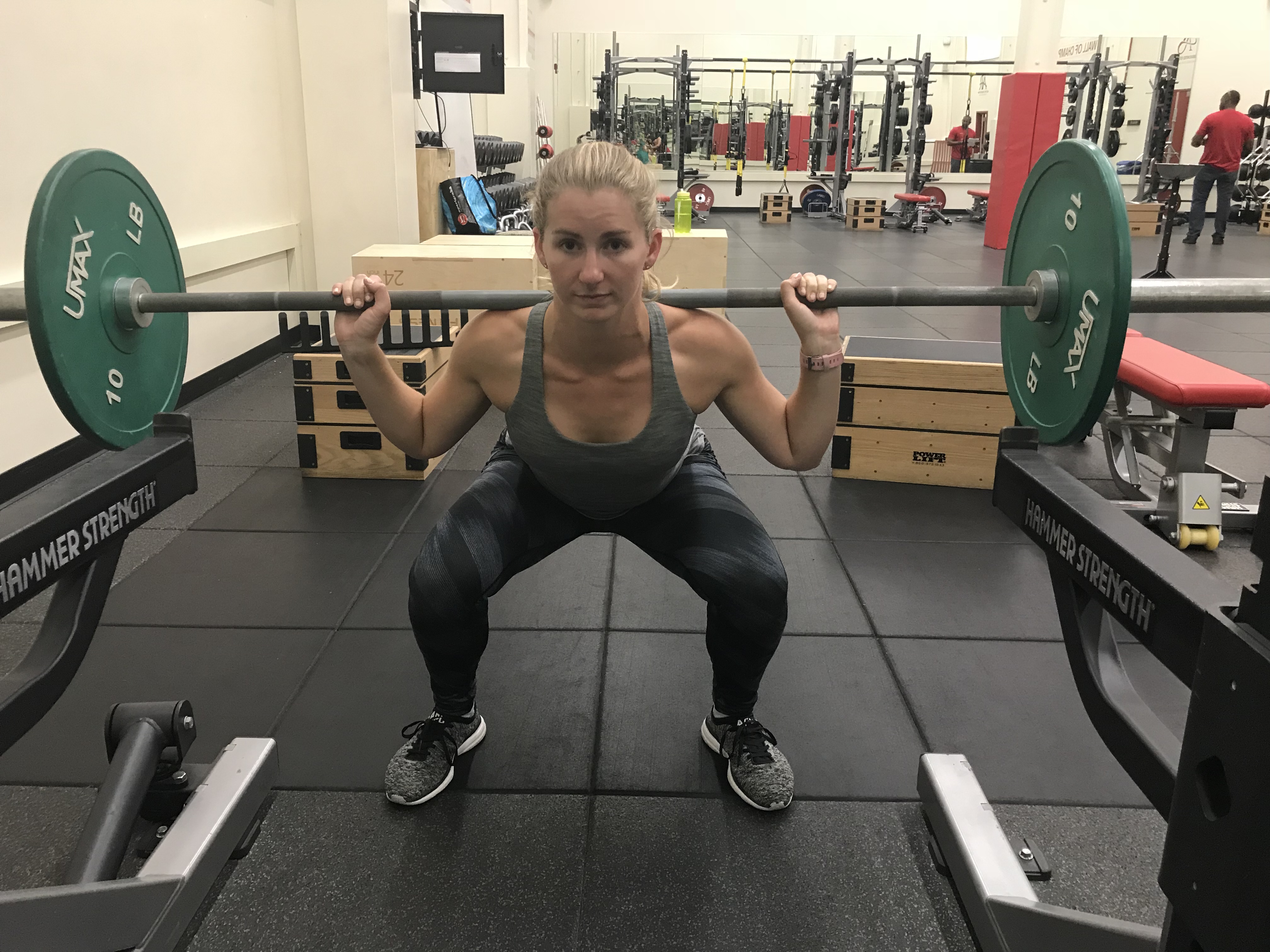
Back (barbell) squats are a great progression because they build leg and hip strength, promote full body mobility and stability, increase core strength, and burn fat.
Are your clients ready to add weight to their squats?
Last month I discussed three trainer approved squat regressions for clients with physical limitations. Once clients have improved imbalances and range of motion (ROM), you can teach them a normal squat.
And then it’s eventually time to look at ways to progress squats.
There are three points I like to have clients focus on when first introducing proper form for barbell squats:
Set up
- Approaching the bar: When approaching the bar, it should be low enough that the squatter must squat up to unrack and step back. If it is too high, clients will be on their tippy toes.
- Hand position: Hands should start under the shoulders, rather close without causing wrist flexion. If that doesn’t feel stable, the grip can widen.
- Bar placement: beginning back squatters typically like to place the bar on the top of the neck and traps. Before positioning the bar, it is helpful to squeeze the shoulder blades together to create a nesting spot for the bar.
Joints and Muscles Targeted
- When performed in the sagittal plane, the primary joint movements in the eccentric (lowering) phase are hip, knee, and ankle (dorsi) flexion. Hip and knee extension, thus occur, in the concentric (rising) phase.
- The gluteus maximus, hamstrings, and quadriceps are the primary extensor muscles targeted.
- It is also argued that squats are a “core” exercise because of the recruitment of the abs (rectus and transverse), and erector spinae.
Form
- Stance: feet are placed hip-width distance with toes pointing straightforward or turned out. Many clients find better ROM and stability with their toes angled out.
- Posture: The spine stays neutral, and the chest tall.
- Depth: Here is where there is some controversy, but recent debate advocates that hips should come slightly below parallel (90 degrees) in order to decrease stress in the lower back. Some argue the “ATG”, *butt to ground/grass depth is the most proper squat depth, but that may take time and practice.
The barbell squat may be a bit of an advanced jump from squat regressions. A few great mid-line options to work up to barbell include air squats, suitcase squats, and split stance squats.
What are your tips for progressing clients to the barbell squat?
[info type=”facebook”]Join the conversation on the NFPT Facebook Community Group.[/info]
Theresa Perales has an MA in Spanish, and is an ESL teacher at San Diego State University (SDSU). After years of struggling with her weight, she decided to give exercise a try. A passion for health and fitness grew instantly and inspired her to become certified as a personal trainer with NFPT, and as a group fitness instructor with AFAA Group Fitness and Madd Dog Athletics® Spinning. Theresa believes that nutrition and fitness are not about aesthetics but ultimately about feeling healthy and empowered.

